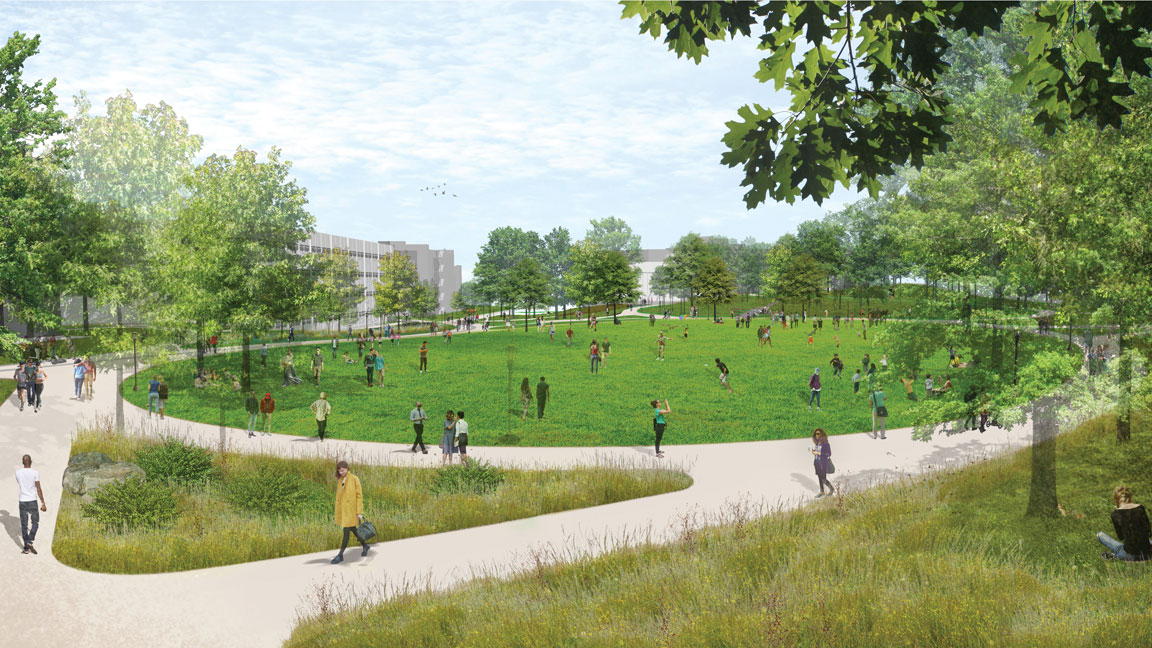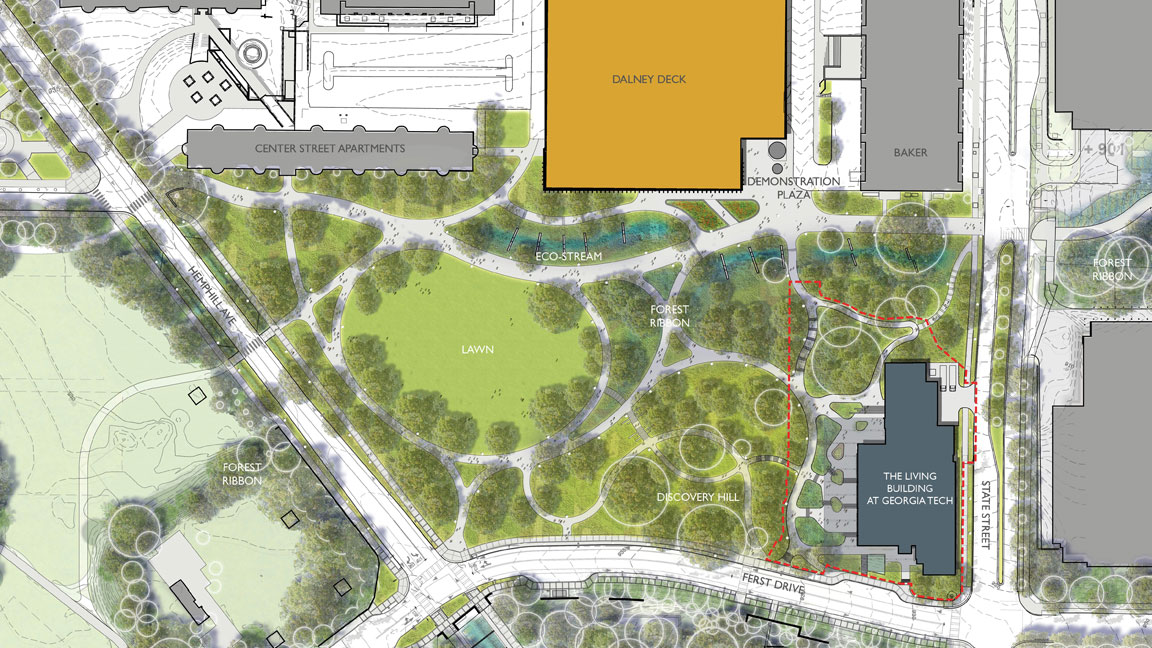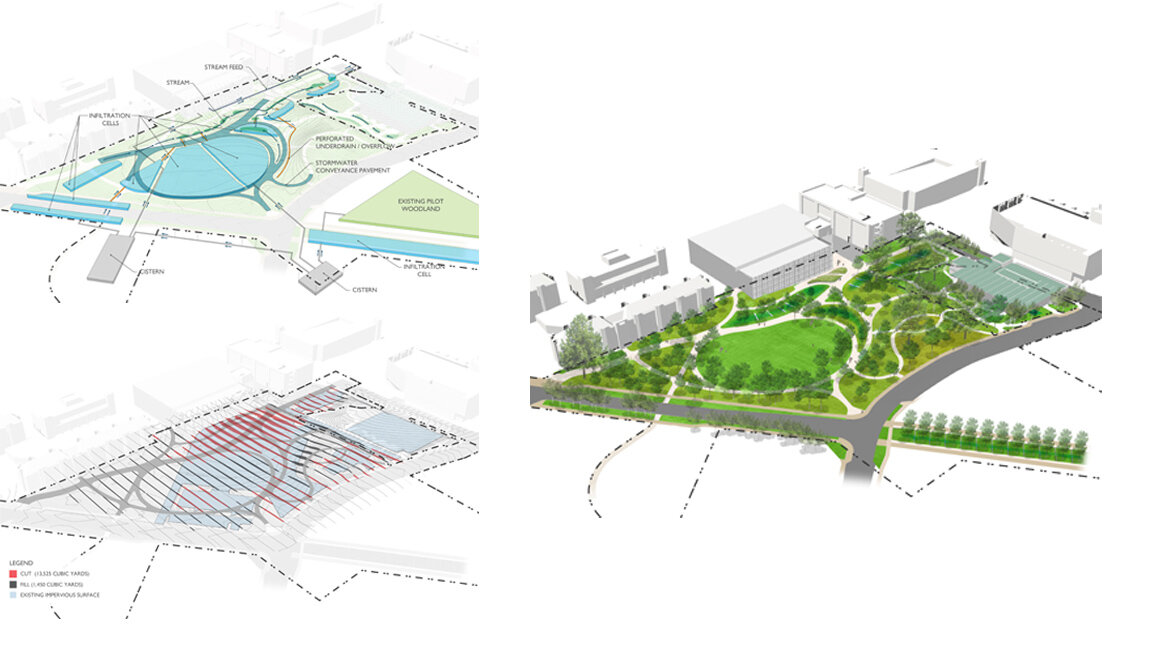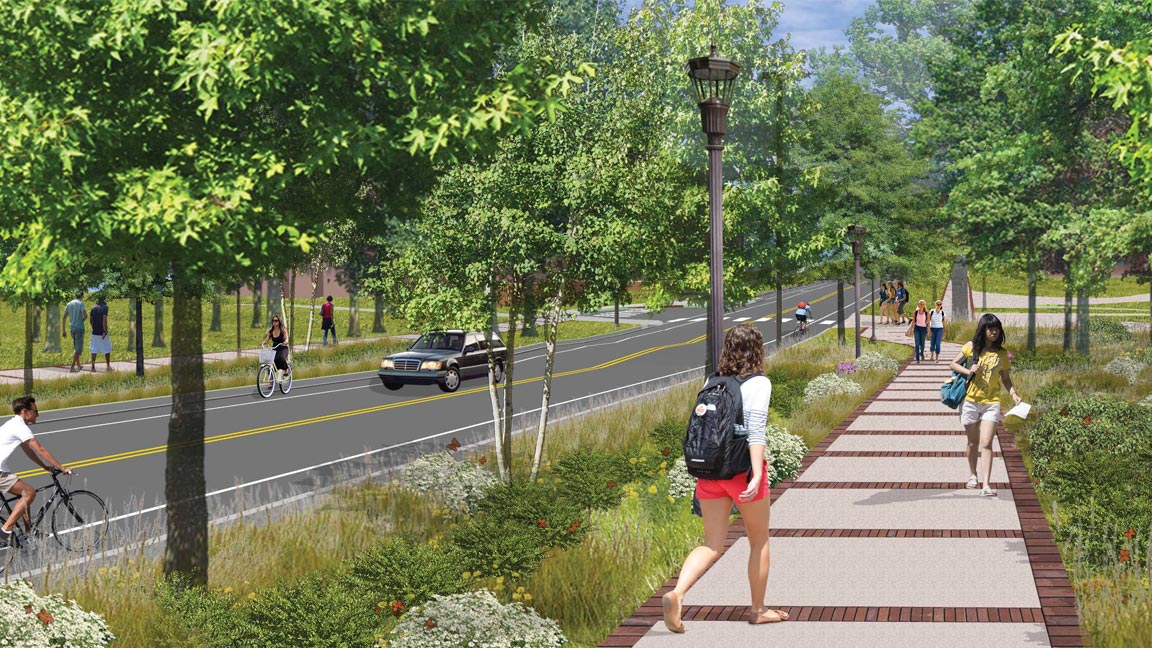Georgia Tech Eco-Commons




Georgia Institute of Technology Eco-Commons Conceptual Plan
The Eco-Commons is a regenerative response to Georgia Tech’s ongoing commitment to environmental stewardship. In collaboration with Andropogon Associates, HGOR developed a conceptual master plan for ten acres of open space in the heart of campus. The design team looked to advance site performance through integrated stormwater management, new bio habitats, blackwater reclamation, outdoor recreation, and opportunities for research and education.
Throughout the process, HGOR studied how the ecological landscape can increase capacity for student life activities, connectivity of human-powered living, education, and demonstration. For example, significant grading challenges are addressed through articulate pedestrian connectivity. Previously riddled with a series of parking lots, the new blueprint features a network of interconnected permeable paths. Universal, human-scale access throughout the buildings and surrounding areas ultimately reduce the car-centered footprint of the campus. Careful grading and path placement was required to maintain ADA accessibility throughout the 10-acre site.
To provide an expression of water, the design team proposed a replication of original streams and natural runoff systems that proceeded the modern-day campus. The recirculating streambed is fed by captured stormwater and has access to reclaimed gray water, which will reduce campus runoff. This system will decrease the institutional impact on the City’s combined sewer systems and ultimately reduce overflow to the Chattahoochee River.
Of notable technological advances, the Eco-Commons will incorporate vegetative hydroponic wetlands to treat campus blackwater to reduce potable water demands and train students on innovative sustainable wastewater strategies.
The resulting project founds a vibrant live-learn-work-play environment within one of the most sustainable universities of the 21st century. Goals for the Eco-Commons are expected to meet and/or exceed those laid out by Georgia Tech by diverting over 50% of stormwater to the CSO, increasing tree canopy by 20% while preserving mature specimen trees, decreasing impervious surface by 40%, increasing lawn/open space by nearly 275%, and decreasing usage and cost of potable water and wastewater discharge. Initial designs were completed February 2017 and construction began October 2019.
| Location | Atlanta, Georgia |
| Year Completed | 2017 |
| Size | 10 acres |
| Design Team | Steve Sanchez |
| Collaborators | Andropogon Associates |
SIMILAR PROJECTS



